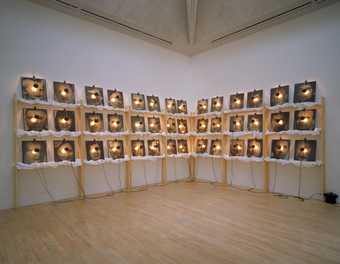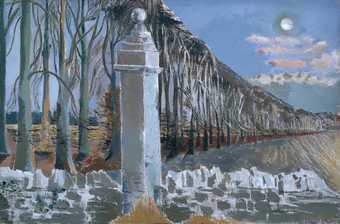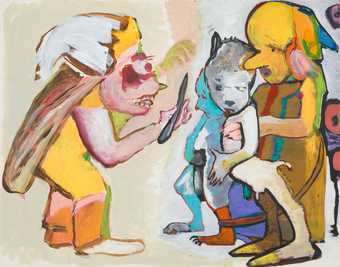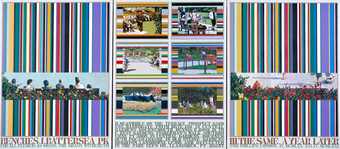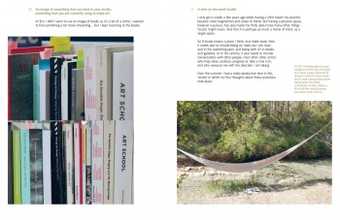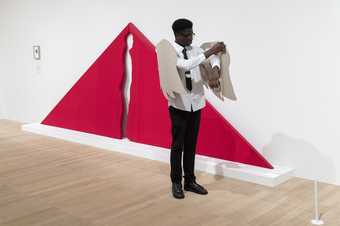Memories relate to the past. Some artists make work about their childhood, others make work about a particular person, place or event they remember.
Memories of the past
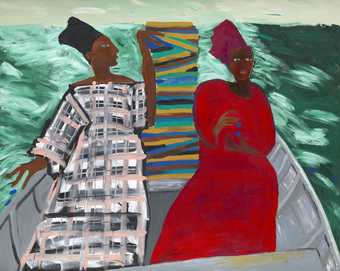
Lubaina Himid CBE RA
Between the Two my Heart is Balanced
(1991)
Tate
© Lubaina Himid, courtesy the artist and Hollybush Gardens, London
Artists like Lubaina Himid and Christian Boltanski address a more general history of the past that is part of our collective memory. Himid often challenges the lack of representation of people of colour in traditional history. Between the Two my Heart is Balanced is from a group of works which propose black women's voices as alternatives alongside those of white men. She has alluded to the meaning of this work:
Two women sit in a small boat tearing up navigation charts: how many died crossing the water ... can the past be replayed ... can the future be different?
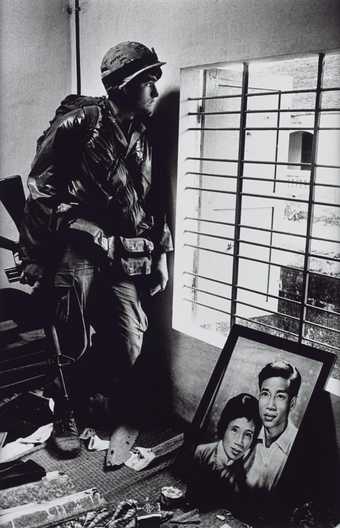
Sir Don McCullin CBE
The Battle for the City of Hue, South Vietnam, US Marine Inside Civilian House
(1968, printed 2013)
ARTIST ROOMS Tate and National Galleries of Scotland
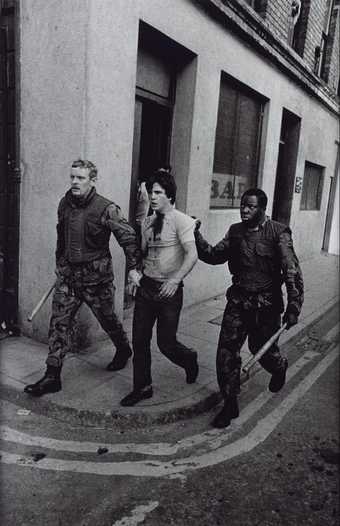
Sir Don McCullin CBE
British Soldiers in The Bogside, Londonderry, Arresting a Catholic Youth
(1971, printed 2013)
ARTIST ROOMS Tate and National Galleries of Scotland
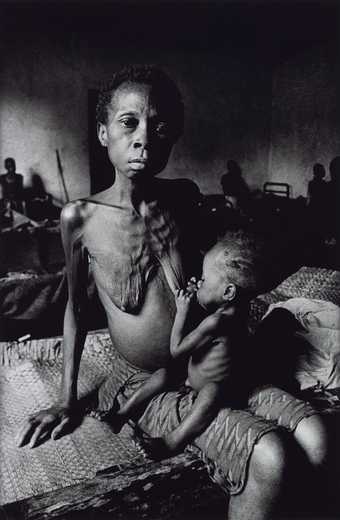
Sir Don McCullin CBE
Starving Twenty Four Year Old Mother with Child, Biafra
(1968, printed 2013)
ARTIST ROOMS Tate and National Galleries of Scotland
Photographer Don McCullin made work in conflict zones and war in Vietnam, Berlin and Northern Ireland. His works document the horror of conflict. They also symbolise how devastating the impact of war is on society.
Making memory physical
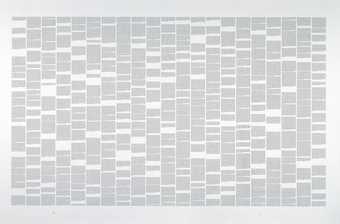
Emma Kay
Worldview
(1999)
Tate
How memory functions and selective memory is the theme Emma Kay explores in her work. In Worldview she tries to write down the history of the world using only her own memories as a reference.
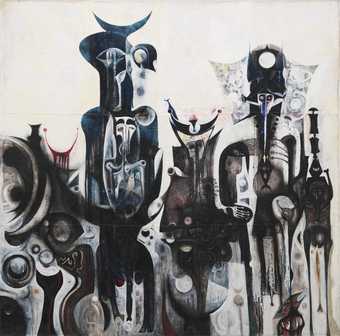
Ibrahim El-Salahi
Reborn Sounds of Childhood Dreams I
(1961–5)
Tate
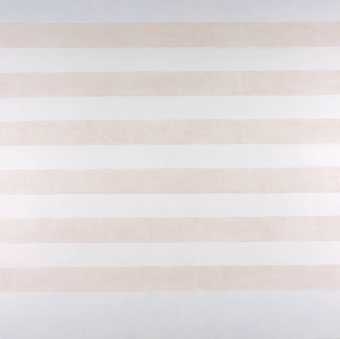
Agnes Martin
Happy Holiday
(1999)
ARTIST ROOMS Tate and National Galleries of Scotland
Both Ibrahim el Salahi and Agnes Martin have created works look at memory in relation to spirituality. El-Salahi frequently draws on childhood memories and visions experienced during meditation for inspiration. In Reborn Sounds of Childhood Dreams I El-Salahi captures the fleeting and dramatic moments when memory and dreams past and present collide. Happy Holiday is one of a series of Martin paintings where she uses titles to evoke happy memories from the past. Her quiet and serene paintings were products of personal and spiritual struggle in her inner emotional world.
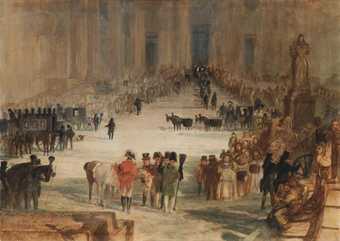
Joseph Mallord William Turner
Funeral of Sir Thomas Lawrence: A Sketch from Memory
(exhibited 1830)
Tate
This Turner work is a literal representation of a past event, created from memory. It was made after the artist attended the funeral of the portrait painter Sir Thomas Lawrence. Turner has remembered many small details, and the work evokes the chill air of a cold January day.
Memories of people
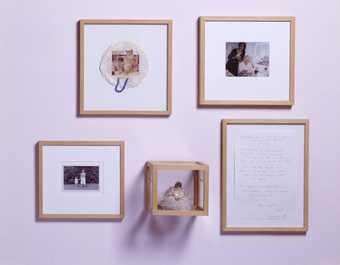
Tracey Emin
May Dodge, My Nan
(1963–93)
Tate
Many artists have used artworks as memorials to people that were close to them. Tracey Emin's work May Dodge, My Nan features a collection of objects which relate to her grandmother. A page of handwritten text from the artist addressing her grandmother pays tribute to their loving relationship.
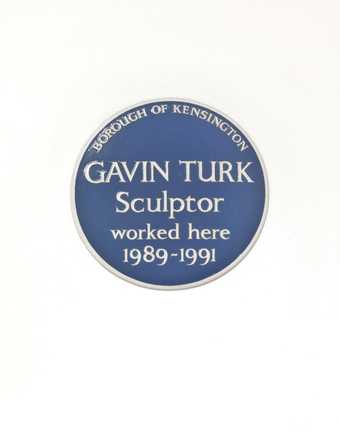
Gavin Turk
Cavey
(1991–7)
Tate
In Cavey, artist Gavin Turk creates a memorial to himself. This blue plaque was made for the artist by one of the companies who make the plaques with which English Heritage marks the homes of distinguished people. He uses the idea his death and the commemorating his life as the subject of the work.
Susan Hiller’s Monument explores memory, death, history, heroism, representation and time. The work incorporates forty-one photographs of memorial plaques the artist came across in a London park. There is one photograph for each year of the artist’s life (at the time the work was made). Each plaque commemorates an ordinary man, woman or child who died while performing an act of heroism.
Fading memory
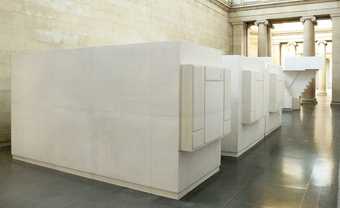
Rachel Whiteread
Untitled (Rooms)
(2001)
Tate
Artists’ treatment of their memories often have a dream-like quality. This suggests the idea of the memory as faded or not being as real as the present. Rachel Whiteread’s casts of now demolished buildings have a melancholy quality. They appear as ghosts of their original structures.
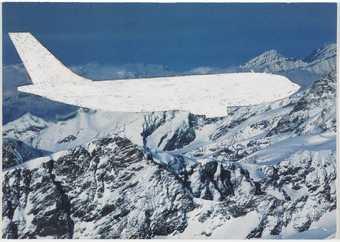
Angus Fairhurst
Swissair, All Evidence of Man Removed
(1993)
Tate
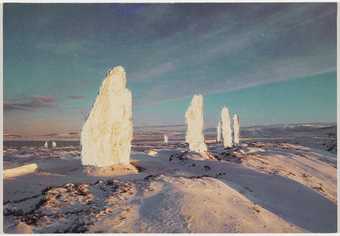
Angus Fairhurst
Stenness, All Evidence of Man Removed
(1993)
Tate
Angus Fairhurst has created works that try to physically erase the memory of man. He has manually blanked out man-made objects in geographically important places. This makes us think about memories of the earth before man, and the effect humankind is having on our world.
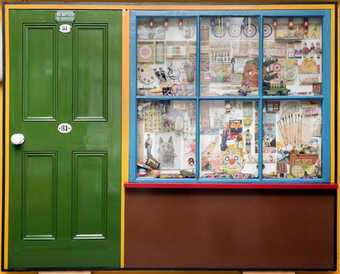
Peter Blake
The Toy Shop
(1962)
Tate
Peter Blake is a pop artist interested in a wide range of cultural forms. These include everything from high art to pop music and children’s toys. This work suggests a sense of nostalgia for the objects related to his childhood. He creates memories of his younger years with his collection old toys and related images.

